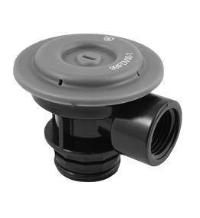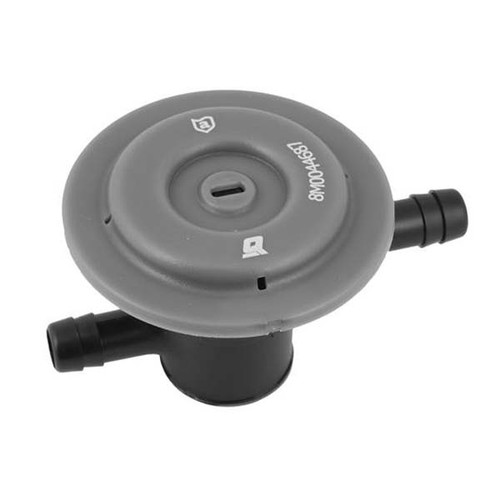I found the pressure relief fuel caps from attwood, this kind does not use a carbon canister. They have caps that require a carbon canister, I recommend you do not bother with the added expense, although the EPA would like you to capture all vapor emissions!, I do believe that compromises the sealed system idea as the carbon canister sits in the vent line exposed to the air.
Deckfills for Pressure Relief Systems : Attwood Marine
The fuel demand valve I used was not tank integrated, I used the model for outboard motors. My old tank could not support an integrated tank fuel demand valve, (from attwood) and it was simple to just install right at the tank inline with the hose. And the price was right compared to the Perko valve which might have screwed int the tank, but then have to mess around with pickup tube length.
Marine Fuel Demand Valve, Boat Fuel Demand Valve : Attwood Marine : Attwood Marine
The other mod was to insert this one way valve into the fill hose, an anti well back valve.
It works to prevent liquid fuel from splashing when refueling or hitting the cap.
I tested the valve and it easily passes fuel. Mine sits about a foot down in the hose, It just slips into the hose.
http://www.discountmarinesupplies.c...U47_m3MWEXK-YCaTcIwrnynznO_hKLxkaAungEALw_wcB
So doing this your fuel does not rot, absorb moisture, go stale.
You eliminate the overboard wide open to the air vent.
If you overfill the fuel will come back up to the fill by way of the vent, just like on your car and shut off the fuel dispenser nozzle.
They do sell a valve (fuel limit vent valve) that screws into the tank vent that when liquid fuel hits it, the backup of fuel in the fill hose shuts off the fuel dispenser nozzle which leaves a little more air in the tank than if you do not have it. that air space is called 'ullage'. I thought about getting one, but did not. Has not been a problem.
If the marina has a fuel sensing nozzle, it will detect when tank is full and shut itself off. When I first got boat, and filled up at Salt Ponds Marina, I did not know their fuel dispenser nozzle did not sense a full tank. That was back in year 2000.
So if they don't have that, you got to be very careful when fueling up. You would think a fancy marina would have decent modern equipment. just imagine if all gas stations did not have such a nozzle, customers lock on the handle, and it just keeps pumping fuel after the tank is full flooding the ground with gasoline..





